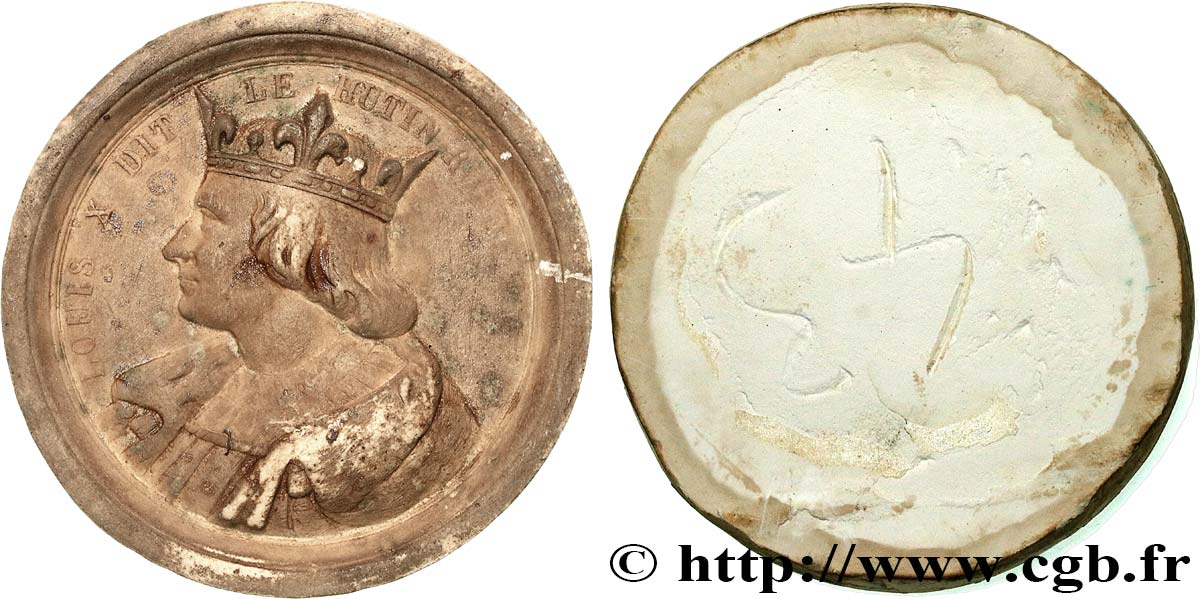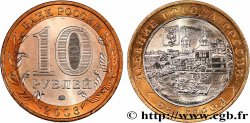Obverse
Obverse legend : LOUIS X DIT - LE HUTIN ROI DE FRANCE.
Obverse description : Buste couronné à gauche de Louis X le Hutin.
Reverse
Reverse legend : LISSE.
Reverse description : 43.
Commentary
Historical background
LOUIS X "THE QUARRELLER"
-06/05/1316)(11/30/1314
Born in Paris in 1289, Louis X was the son of Philippe IV and Jeanne de Navarre. After the authoritarianism of Philippe le Bel, the short reign of Louis X was the time of a baronial reaction. Philippe's lawyers were removed from the council in favor of Louis X's familiars, such as Béraud de Mercœur, and their property confiscated, themselves imprisoned. Charles de Valois had his personal revenge against Enguerrand de Marigny who was hanged (April 1315), but this court reaction was altogether limited. The league barons wanted more than the limitation of subsidies: guarantees for the future. They asked the king for charters in which their rights would be inscribed. The first was the charter to the Normans (March 1315). Followed those to the Languedociens (April 1315), the Burgundians (April 1315), the Picards and the Champenois (May 1315). All these concessions came from the fact that the king wanted to fight the Flemish. Indeed, once the charters obtained, the barons followed him to the host with zeal. Due to the rainy summer, this army could not carry out important operations: it was the "muddy host". But the nobles who came to the army obtained new guarantees. The clergy followed the example of the barons. In exchange for the payment of a decime, he received confirmation of the charters attesting to his freedoms granted by Philippe le Bel. Barons did not question royal authority, but only voiced local grievances against royal agents. Contrary to what happened in England, they intended to leave power to the king, with a return to the "good times of Saint Louis". The charters, filled with restrictions and vague formulas, were not dangerous for the monarchy. The wisdom of the royal policy, which temporized to avoid conflict, was seen in Artois, where the barons had revolted against the Countess Mahaut and her adviser Thierry d'Hirson. The king settled the dispute by a general pardon, in November 1315. If the king had not died in June 1316, Mahaut would no doubt have yielded to the demands of his vassals.. The king had put to death his first wife, Marguerite of Burgundy, compromised in the scandal of the tower of Nesle. He died leaving his second wife, Clemence of Hungary, pregnant.. The king's posthumous son, John I, lived for five days, in November 1316. The clergy followed the example of the barons. In exchange for the payment of a decime, he received confirmation of the charters attesting to his freedoms granted by Philippe le Bel. Barons did not question royal authority, but only voiced local grievances against royal agents. Contrary to what happened in England, they intended to leave power to the king, with a return to the "good times of Saint Louis". The charters, filled with restrictions and vague formulas, were not dangerous for the monarchy. The wisdom of the royal policy, which temporized to avoid conflict, was seen in Artois, where the barons had revolted against the Countess Mahaut and her adviser Thierry d'Hirson. The king settled the dispute by a general pardon, in November 1315. If the king had not died in June 1316, Mahaut would no doubt have yielded to the demands of his vassals.. The king had put to death his first wife, Marguerite of Burgundy, compromised in the scandal of the tower of Nesle. He died leaving his second wife, Clemence of Hungary, pregnant.. The king's posthumous son, John I, lived for five days, in November 1316.








 Report a mistake
Report a mistake Print the page
Print the page Share my selection
Share my selection Ask a question
Ask a question Consign / sell
Consign / sell










